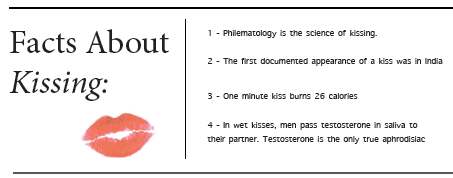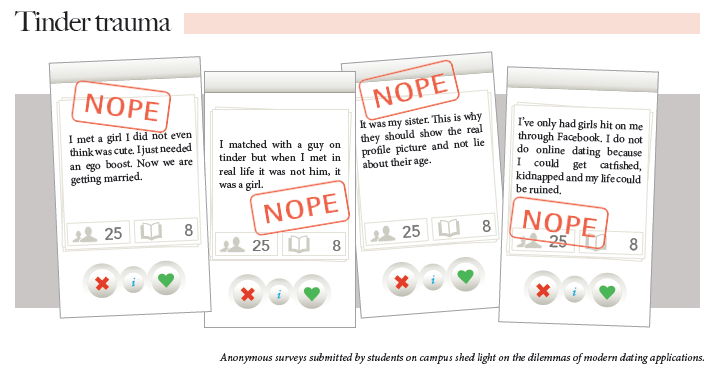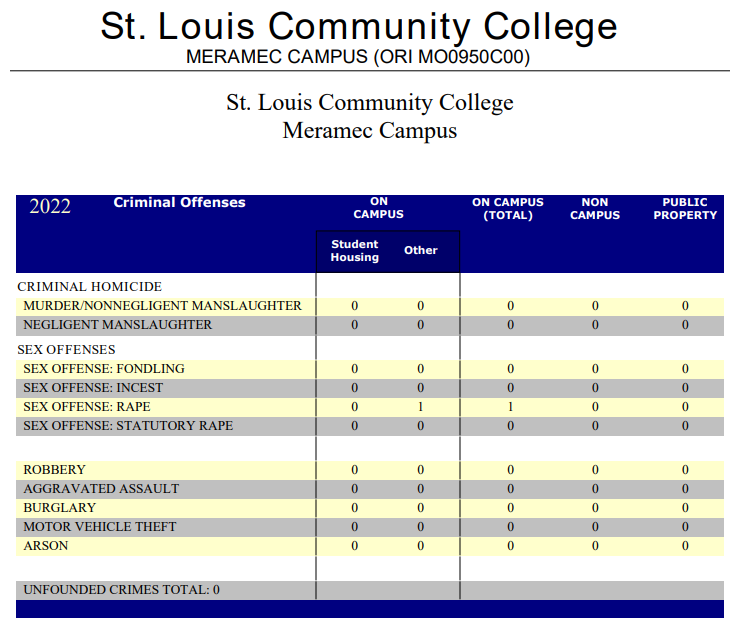Dating apps & sex
By: Dalila Kahvedzic
Editor-In-Chief
As Miley Cyrus states in her song “Someone Else,” “love is patient, love is selfless, love is hopeful, love is kind, love is jealous, love is selfish, love is helpless, love is blind.” Is love really all of these things?
According to Google, love is an intense feeling of deep affection, but according to dating apps such as Tinder, love may come after one decides to swipe right.
Whether someone decides to swipe right or not, love is something we all crave. Love can be multiple things; a relationship with a grandmother, a relationship with a sibling or a relationship with a partner.
Love is patient. A person waits for love and when they have it, it stands the test of time. Is this the right time to do this, when is it the right time to make the next move?
Love is selfless. Love is hopeful, love is kind. Is it?
Love is jealous, love is selfish, love is helpless, love is blind. Is it?
Love is communication. It is the interaction one gets from their significant other on a daily basis as they go about their normal routine tasks.
Communications professor Chris Smejkal said that in today’s society, people gravitate more towards communicating through a screen than in person because it requires less commitment.
But what about somebody’s true, unpolished self that is seen when it is a face-to-face interaction? The old-school feelings of touch, chemistry and energy?
Seeing somebody’s edited and polished photo that they post on a website versus seeing them in person are two completely different scenarios. How much information can one really pull from a photo and a short bio on tinder, versus a two-minute conversation in person?
When interaction is in person, the nerves kick in. The awkward silences happen and the typical conversation about mediocre topics, such as the weather, begin to fill it. Which one proves to be better?
Anonymous surveys were taken and submitted by students on the Meramec campus to show us what happens on these dating apps when there is no in-person, face-to-face communication involved.
The four types of attraction
By: Brittney Farrow
Opinions Editor
What is attraction? A powerful force in its own right, attraction is as abstract and complicated as any relationship. It is the spark that pushes partners towards each other. A small component of the evolution of humankind, attraction is not magic or fate, but rather a very scientific formula infused with basic biology. Scientifically speaking, there are four parts of attraction.
Health & Status
Deep down at the bottom of the pyramid of attraction consists the foundation, which relies solely on status and health to be its legs. When looking for a romantic or sexual partner, health and status are the signs a human body and mind will seek out first. Without status or health, attraction would not exist; but what do those words signify?
Health is simplistic. When seeking a mate, candidates are assessed based on not only their physical attributes – such as appearance, mannerisms and smell – but also on mental capacity.
Status is both internal and external. Internal status focuses on confidence, skill sets and belief systems whereas external status is more about a potential partner’s career, material possessions and visual markers. Due to social evolution, human beings highly value wealth because it signifies a secure future for any potential offspring; regardless, studies have shown that internal status creates more long-standing relationships.
Emotional
If a romantic partner shows good health and promising status, the emotional component of attraction comes into play. Emotional connections include the element of trust and how developed a potential partner’s emotional intelligence is. Uniqueness falls under this category, and is part of the reason some potential mates are preferred over others.
Logic
Finally, at the very top of the pyramid is logic. Logic determines how good of a match a partner will be. It determines how closely two different sets of goals and ideologies align, and how compatible they will be as a result. The greater the alignment, the greater the attraction.
It is important to note, however, that in instances where social media and the internet is involved the pyramid is inverted, meaning logical connections usually occur first.
Face-to-screen: a new era of dating
By: Katie Hayes
News Editor
Dating apps may have redefined the dating field for millennials, but apps such as Tinder or Grindr especially changed the landscape for younger millennials — the generation who never experienced life before texting.
“If you were attracted to somebody and wanted to make some kind of contact, most millennials right now are going to communicate online,” Communication Professor Chris Smejkal said. “They’re going to make some kind of initial contact online. Usually it’s just to kind of see what’s out there.”
There is a stigma attached with the millennial generation — that they feel less confident in-person than previous generations.
“We are seeing that people, especially men, are becoming more and more shy around women, especially younger men,” Smejkal said. “There’s a lot of research that says men are becoming more shy in making that initial move. So the old conventions of asking somebody out on a date are not the same now.”
In a face-to-face interaction, there’s a lot more that could go wrong. There’s a lot of variables you can’t control, so a lot of younger people really gravitate towards that online account because it’s something they can control a little bit more and it requires less commitment initially, Smejkal said.
Although the information on dating apps may be accurate and the images real, it is not the whole of a person.
“A lot of our online interaction and our online face is manipulated to make ourselves look the best possible way we can look,” Smejkal said. “So the downfall of that, is it may not be your true self, the unpolished self.”
Jody Martin de Camilo, a reproductive physiologist and professor of biology at Meramec spoke on flipping through accounts on dating apps.
“You can meet more people and it’s instant gratification,” Martin de Camilo said. “You can flip through 1000 pictures in an hour, rather than going out and trying to meet somebody. And, at least with men, men are so visual, that they can flip through those pictures rather quickly. The drawback is, how much can you really tell from a short bio on Tinder and an image?”
Although Martin de Camilo does not think it is possible to chemically fall in love over a dating app, it is possible to feel an attraction.
“You can get that release of that adrenalin to drive yourself to keep going back to see what they’ve written,” Martin de Camilo said. “So if you have a connection with somebody, you can get that drive. That adrenalin, that release will only last for a certain amount of time until you meet. Once you meet them, it’s either going to go forward or not, because once you meet them, that connection will be there or not.”
Although the time to meet differs for all dating app users, there is a common thread. Smejkal said we do not like to be around people who do not self-disclose much because they have more power than we do in the relationship.
“The main thing that tends to happen, is when you feel like you can trust that person, there’s research that suggests that when you self-disclose online — through Tinder or whatever, and you feel like you can trust that individual — that’s when people feel more comfortable then to have that face-to-face interaction,” Smejkal said.
When, and if, that face-to-face interaction happens, having a basis for a relationship is easier for some people than meeting in-person first.
“You have conversation starters built in a little bit that might not be there in a face-to-face interaction,” Smejkal said. “I definitely do think that may be a benefit to some people.”
However, the majority of the information we take in about another person comes from a face-to-face interaction.
“You know, when you’re online with somebody you only get really that one-dimensional view of them whereas when you’re face-to-face with somebody there are so many other variables that aren’t online,” Smejkal said. “The old-school variables like touch, chemistry, pheromones, that 3D object in front of you, that energy you feed off of each other that you might not be able to get online. I think that’s a big component.”
Martin de Camilo said a two-minute conversation with another person tells you a lot about them, while a still picture does not necessarily give someone the full picture.
“I don’t think there’s one great way to meet, because you can hear stories of people who have met on match. com and they’ve had a great relationship or you can hear of people who have met in a bar or met in a classroom,” Smejkal said. “People have been set up on a date and you can hear in any one of those scenarios, relationships that have worked well and relationships that have failed. So I don’t think there is any one good way.”













